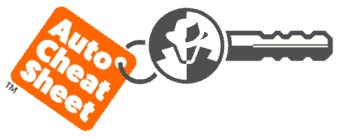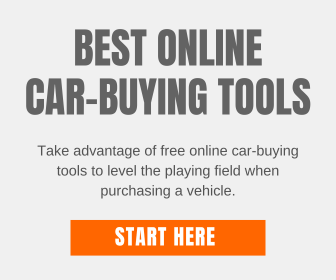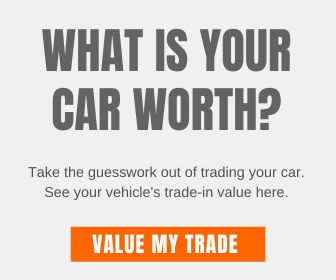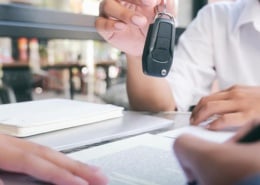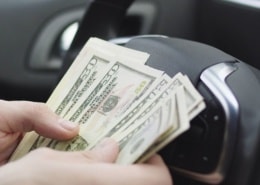How the Trade-in Appraisal Works in a Dealership
The Dealership Trade-in Process Explained
The used car trade-in process may vary slightly at each dealership, but the principles of appraising a car are the same. The entire process typically takes anywhere from 15 to 30 minutes, depending on how busy the used car manager or appraiser is at the time.
Every appraiser is different, some may go through your car with a fine-tooth comb, and others may look out the window at your vehicle. Remember, an appraisal is someone’s opinion of your car’s worth. No scientific method or secret book tells the actual value of any used car.
What Happens When You Tell the Dealer You Have a Trade?
Dealers like to know if you have a trade-in as soon as possible during the car-buying process. Most dealerships have one or two designated people who value all the used car trade-ins. The timing of the process may be a little different, but the actual appraisal process is the same amongst all dealerships.
I highly recommend you prepare your vehicle to trade by going through it and cleaning it up as if you were selling it privately. The cleaner the car, the better. Ensure all the fluids are topped off, and your vehicle is presentable. The goal is to get as much money as possible from your trade.
There are four essential steps to getting your car appraised by a dealership; I’ve broken down the entire process below. It begins with handing over your keys and ends with the dealer presenting you with your trade’s actual cash value.
Real-Time Bargain Hunting: Turn to Edmunds for instant access to the latest and greatest local deals, saving you time, money, and stress.
Handing Over Your Keys to the Appraiser
When you tell a salesperson you have a vehicle you want to trade in, they will ask for your keys to retrieve some information from your car.
“NEVER give your only set of car keys to the dealer.”
When you turn over your car to the salesperson, always give them a spare set of keys. If you don’t have a spare key, take your car key off your key chain before handing it over.
A good salesperson will use specific sales techniques when inquiring about information on your trade. They may even ask you to come out to your car with them to help “sell your car to their manager.”
They’ll begin writing information down, like the year, make, model, and mileage of your car. The data is for the used car manager or appraiser to use later during the appraisal process.
They may ask you questions like, “How many miles on your tires,” or “Has the vehicle ever been wrecked, repaired, or flood-damaged?”
After asking you a few questions, the salesperson will get quiet and start doing a “silent walk-around.”
What is a Silent Walk-Around?
A salesperson or manager will walk around your trade-in and touch or point out every little dent, crack, worn tire, scratch, or imperfection and not say a word. Looking concerned, they may nod or scratch their head to let you know they have found a discrepancy.
Don’t worry; this is all a part of the silent walk-around. All they’re attempting to do is mentally devalue your car in front of you, so think it’s not worth as much as it is.
When a salesperson does a silent walk around, most customers immediately start making excuses about every little door ding. It’s all a psychological game. Don’t let them get in your head; if you start making up excuses, you’re letting them win.
Now that you know what they’re up to, try not to smile or laugh. Only speak if asked a question. Don’t worry about everything he touches or sees; it’s just an act.
The Used Car Appraisers Role
After the salesperson collects the information from you and your car, they will take the information or the vehicle to the appraiser.
Typically, the used car manager will appraise all of the trades; he’ll go through a mental checklist, thoroughly inspecting the vehicle.
His overall goal is to determine how much reconditioning costs will be and find discrepancies to help lower the value of your trade.
What Does a Car Appraiser Look For?
If he’s good at what he does, he will walk around the entire car to get an overall view of the body and paint condition of the vehicle, also checking the tires for tread wear.
He’ll then check the currency of your tags, inspection, and registration; he’ll inspect the windshield and all the glass for any cracks, chips, or blemishes.
He will check the fluids and open all the doors, hood, and trunk. He’ll inspect the vehicle for cleanliness and ensure every button and switch works. If your car has a navigation system, DVD player, or CD, he’ll ensure they operate correctly.
He’ll then scan the vehicle identification number (VIN) with his smartphone and check its history with a company such as AutoCheck Vehicle History Reports to ensure the vehicle’s title history comes back clean.
Most of these smartphone programs will also tell the appraiser about the current used car market and some average current values of the vehicle he’s appraising.
As the appraiser inspects your car, he’s looking for specific “red flags” like paint lines, wrench marks on nuts and bolts, a sputtering engine, misaligned carpet, low fluids, etc.
If the appraiser finds one of these “red flags,” he will look a little deeper into the area to see if he can find anything else he can use to devalue the vehicle.
The Appraiser Will Test Drive Your Car
He will then take your car on a test drive. He will check the odometer’s operation, engine idle, acceleration, brakes, alignment, and the overall handling of your vehicle. Most test drives last 3 to 5 miles or at least one click of the odometer.
Some used car appraisers are great at what they do and have a set route they take every vehicle through. The course may consist of highway driving, stop-and-go driving, and rough road areas to test the shocks.
As the appraiser inspects your trade-in, he has to decide if your car will be a vehicle to retail on the lot or wholesaled at an auction. Contrary to popular belief, most dealers try to “break even” with wholesale.
Good dealers believe that if they make money wholesale, they’re missing new and used car retail sales because they’re not giving enough money for trades.
Is Your Trade Classified as Retail or Wholesale?
If the used car manager decides your vehicle will qualify for retail. He must determine the dealer cost to get your vehicle ready and available for sale on the lot. That means he must specify a value for your car and then subtract money for any discrepancies, cracked windshield, torn leather, detail, tires, alignment, etc.
If he decides your trade will be wholesaled or sent to auction, he’ll set a value below your car’s current wholesale market value. The lower value is that he will make a little money at the auction or when he sells it to a wholesaler.
Most car dealers try to break even or make very little money wholesale. If dealers make money wholesale, they believe they are missing out on retail car sales.
They Will Check the Current Market Value of Your Trade
After the used car manager has driven your trade, he’ll check the current used car market in the local area and see what your specific car is worth on the wholesale market.
He’ll refer to sizeable wholesale auto auction companies such as Manheim Auto Auction Reports (MMR). Manheim is the largest auto auction company in the Nation that almost all the dealers use, myself included. You must have a wholesale or dealer’s license to access Manheim online or attend an auction.
He may also refer to a book such as NADA Guide, Kelley Blue Book, or Black Book as secondary choices or if he needs more information to make a good decision.
There are usually four columns in each of the above books: Extra Clean, Clean, Average, or Rough when an appraiser refers to one of these books, such as Black Book (most common). No matter how clean your trade-in is, they will use the average or rough column or the columns to the far right for the amounts to value your car.
The Appraiser Will Assign a Value to Your Trade-in
After determining the value of your trade-in, he will now subtract money for any discrepancies he may have found while appraising your car.
Once the used car manager has completed the appraisal process of your trade-in, he will call the new car manager or whoever is working on your car deal. He will give that person your trade’s Actual Cash Value (ACV).
Presenting You With Your Trade-in Value
After the used car manager calls the manager working your car deal. They will simultaneously present you with your payments, terms, cash down, and ACV. They may use a “four square” or another method to give these figures to you.
This is how a dealer may attempt to scam you on the ACV of your trade:
Example: The trade-in’s true ACV is $8000. The manager working your car deal may start presenting you with a lower number of only $5,000. This is called “Holding on your Trade.”
In the example above, the manager holds a $3,000 profit on your trade. You’re severely disadvantaged if you haven’t researched before getting to this point in the car deal. This is why having a good idea of your vehicle’s worth before showing up at a car dealership is essential.
This is an old and effective little trick car dealers like to use during the trade-in negotiating. It’s still commonly practiced in today’s car dealerships almost every time a trade is involved. You are responsible for negotiating your way up to the amount your vehicle is worth.
You will lose if you have no idea what your vehicle’s worth is before entering this arena with a dealer.
Treat Your Trade-in as a Separate Transaction
Always treat trading in a vehicle as a separate transaction. Agree to the purchase price of the car you’re buying first, then negotiate the price they’re giving you for your trade.
This will keep a dealer from manipulating numbers and make it easier for you to tell how much they’re offering you for your vehicle.
Once you receive these two numbers, you can calculate your trade difference.
$25,000 – The agreed price of the car you’re buying
– $9,000 – ACV of your trade
$16,000 – Trade difference
Further Trade-in Tips and Advice
Further tips and advice about the trade-in process:
- Do not tell the dealer you have a car you would like to trade until you’ve agreed on the purchase price of the vehicle you want. Most dealers automatically assume you’re trading in a car. So stick to your guns, stay in control, and don’t bring your trade into the conversation until you’re ready.
- Always look at the car buying and trade-in processes as separate transactions. This will make it harder for a dealer to attempt to rip you off on your trade.
- Once you’ve told the dealer, you have a trade. They will begin to ask you questions, trying to gather as much information as possible.
- The salesperson will gather basic information from your vehicle, such as make, model, years, mileage, etc.
- Some salespeople may ask you to come out to trade with them. Do not offer up information unless asked. Any information you voluntarily provide about the car’s history may be used against you.
